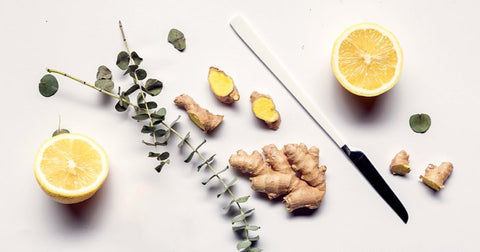With sunnier days come brighter foods, and since springtime is in bloom, grocery carts are loaded with vibrant yellow lemons. Unfortunately, that typically means compost and trash bins are also loaded with lemon peels. That outer layer on citrus fruits is often overlooked, but utilizing it may have benefits beyond waste reduction.
During a series on cooking to enhance your mood, chef and food justice activist Sophia Roe called lemon zest her favorite ingredient, and nutritional psychiatrist Uma Naidoo, M.D., backs her up, calling the rind underrated. So of course, we had to ask why.
Benefits of lemon rind.
While most people are in it for the juice alone, the rind of citrus fruits are also rich in macro- and micronutrients.
“Lemon rind contains multiple nutrients, such as flavonoids, phenolic acids, and essential oils, which are of vital importance to human health due to their active properties,” Naidoo tells mbg.
These nutrients provide antioxidative and anti-inflammatory effects, as well as cardiovascular and neuroprotective benefits, she adds.
Along with being surprisingly nutrient-dense, lemon rind can also act as a seasoning of sorts, adding a bright, zingy flavor to most meals. “Everything is better with lemon zest! So, my favorite thing about lemon is the zest,” Roe tells mbg. “It goes on everything.”
How to use lemon rind.
Lemon rind can enhance nearly anything, including water. These no-waste lemon ice cubes will make drinking lemon water an all-day habit rather than just a staple of your morning routine.
After hydrating, you can brighten up your day with these blueberry overnight oats, this savory yogurt bowl, or these blistered mushrooms with kale.
Roe also suggests using lemon zest for ice cream, salad dressings, and protein sources (think salmon, chicken, or quinoa). “It just adds wonderful fragrance,” she says.
The takeaway? When life gives you lemons, use every single part of them.




